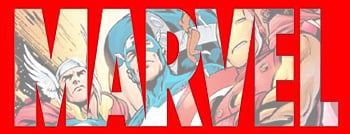Originally posted in the SMEI blog
 At some point all business leaders are challenged to “innovate” in order to grow their company’s bottom line.
At some point all business leaders are challenged to “innovate” in order to grow their company’s bottom line.
Done right, innovation creates value for both the company and the customer through new-to –the-world solutions to needs. It’s logical that products and services are where companies start their innovation efforts because, after all, these are very tangible sources of value. However, brand and marketing can also be powerful drivers of value and differentiation and should not be overlooked as potential anchors for innovation.Many innovation initiatives begin with a brainstorming session in which a bunch of internal folks sit around and try to generate new ideas for products or services they think customers want. For a fresh take on this process, consider “brand-storming” as the starting point for inspiration.
What is a “brand-storming” session, exactly? Well, in marketing speak, it’s generating innovative ideas for brand extensions, leveraging brand equity (a very valuable asset) to push into adjacent or even totally new product areas.
Start a successful brand-storm with a clear articulation of your brand strategy, brand attributes and positioning. Then do creativity exercises that apply key brand attributes to new markets or to new solutions to existing customers.
Need to get the juices flowing? Look for examples in the marketplace:
-
Consumer products are the easiest place to start. For example, consider Arm & Hammer Baking Soda’s extension to toothpaste (“clean” and “white”) or Duracell’s introduction of the PowerMat to recharge phones and other devices (e.g. “long lasting power”).
-
Virgin is probably the poster child for brand-centered innovation, using its well-defined and unique positioning to extend into everything from airlines to cell phones.
All of this is not to say that brand should be the only source of invention. But brand-storming brings a new part of the company to the innovation table and adds another angle for sparking new, powerful ideas for growth.
In our upcoming webinar we will look at some of the common pitfalls of innovation initiatives and explore how to use “brand” and “brand attributes” as well as innovative go-to-market strategies to unlock growth opportunities in new, unexpected directions. Hope to see you there!
Posted by J. Mark Carr, Mark is co-founder and managing partner of South Street Strategy Group.


 You might not know it from the constant attention lavished on startups, but some of the most established and largest companies in the world are amongst the most innovative—they routinely out-innovate their smaller peers. Where they falter is in failing to bring these game-changers to the marketplace without diluting, complicating, or killing them.If you have doubts about what I just said, here are two of my favorite examples that illustrate the issue really well.
You might not know it from the constant attention lavished on startups, but some of the most established and largest companies in the world are amongst the most innovative—they routinely out-innovate their smaller peers. Where they falter is in failing to bring these game-changers to the marketplace without diluting, complicating, or killing them.If you have doubts about what I just said, here are two of my favorite examples that illustrate the issue really well.
 Kristin Vincent, VP, Product at
Kristin Vincent, VP, Product at  Just over a year ago, leading toy maker the LEGO Group launched its new line of blocks and figures for girls called LEGO Friends in key global markets in the Americas, Europe, and Asia. It is one of the most successful launches in the company’s history and has already generated twice as much business as expected.The story of Friends started long before the 2012 launch, and deserves a full-length case study; for now I’m excited to share a little of what I learned from meeting and listening to Laura Post, Senior Director, Strategic Planning and Insights, for LEGO in the U.S., when she talked about LEGO Friends at the IE Group’s Women in Strategy Summit in New York City a few months ago.
Just over a year ago, leading toy maker the LEGO Group launched its new line of blocks and figures for girls called LEGO Friends in key global markets in the Americas, Europe, and Asia. It is one of the most successful launches in the company’s history and has already generated twice as much business as expected.The story of Friends started long before the 2012 launch, and deserves a full-length case study; for now I’m excited to share a little of what I learned from meeting and listening to Laura Post, Senior Director, Strategic Planning and Insights, for LEGO in the U.S., when she talked about LEGO Friends at the IE Group’s Women in Strategy Summit in New York City a few months ago.